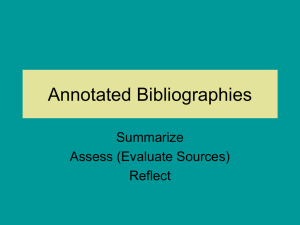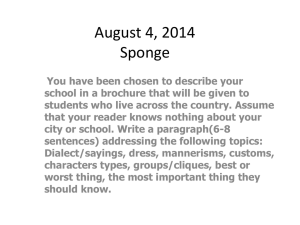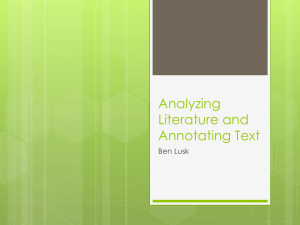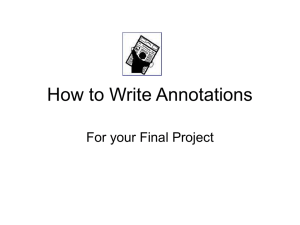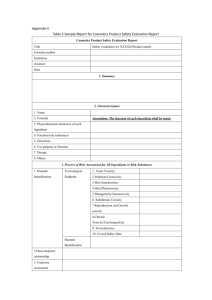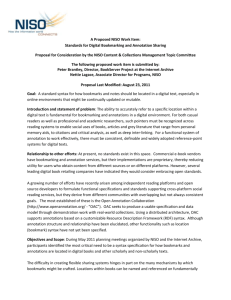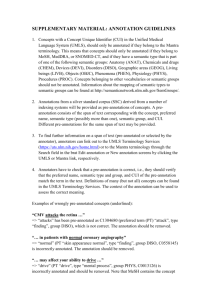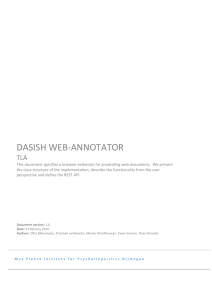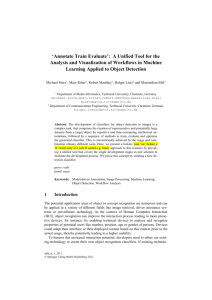A Guide to Annotated Bibliographies
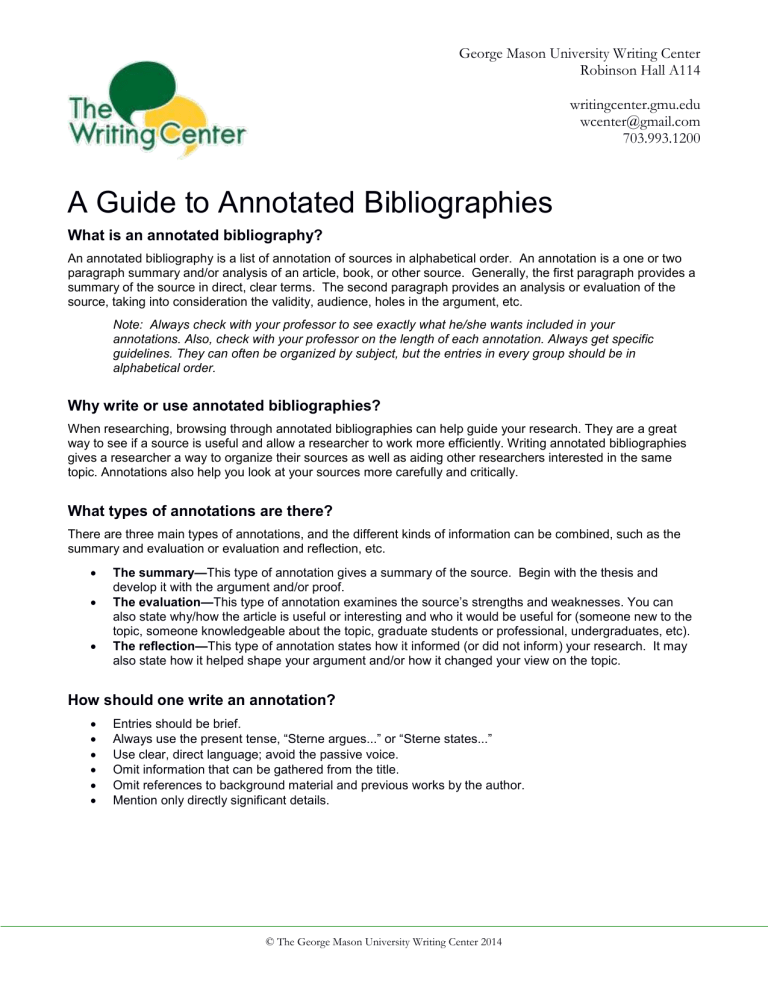
George Mason University Writing Center
Robinson Hall A114 writingcenter.gmu.edu wcenter@gmail.com
703.993.1200
A Guide to Annotated Bibliographies
What is an annotated bibliography?
An annotated bibliography is a list of annotation of sources in alphabetical order. An annotation is a one or two paragraph summary and/or analysis of an article, book, or other source. Generally, the first paragraph provides a summary of the source in direct, clear terms. The second paragraph provides an analysis or evaluation of the source, taking into consideration the validity, audience, holes in the argument, etc.
Note: Always check with your professor to see exactly what he/she wants included in your annotations. Also, check with your professor on the length of each annotation. Always get specific guidelines. They can often be organized by subject, but the entries in every group should be in alphabetical order.
Why write or use annotated bibliographies?
When researching, browsing through annotated bibliographies can help guide your research. They are a great way to see if a source is useful and allow a researcher to work more efficiently. Writing annotated bibliographies gives a researcher a way to organize their sources as well as aiding other researchers interested in the same topic. Annotations also help you look at your sources more carefully and critically.
What types of annotations are there?
There are three main types of annotations, and the different kinds of information can be combined, such as the summary and evaluation or evaluation and reflection, etc.
The summary — This type of annotation gives a summary of the source. Begin with the thesis and develop it with the argument and/or proof.
The evaluation — This type of annotation examines the source’s strengths and weaknesses. You can also state why/how the article is useful or interesting and who it would be useful for (someone new to the topic, someone knowledgeable about the topic, graduate students or professional, undergraduates, etc).
The reflection — This type of annotation states how it informed (or did not inform) your research. It may also state how it helped shape your argument and/or how it changed your view on the topic.
How should one write an annotation?
Entries should be brief.
Always use the present tense, “Sterne argues...” or “Sterne states...”
Use clear, direct language; avoid the passive voice.
Omit information that can be gathered from the title.
Omit references to background material and previous works by the author.
Mention only directly significant details.
© The George Mason University Writing Center 2014
Sample Annotations
The first is an example of an annotation done in two paragraphs and written in complete sentences. This type of annotation is the most thor ough. The first paragraph summarizes the source’s argument, and the second paragraph evaluates the source. The second annotation is more informal and written in phrases. It gives a basic summary and evaluation. The third is similar to the second in that it provides summary and evaluation, but it is written in full sentences. These are only three examples of the many different forms an annotation can take.
Always check with your professor for guidelines on length, style, and content. Note the use of the third person and the use of the source author’s name only once in the beginning.
Bedrosian, Margaret. “Grounding the Self: The Image of the Buddha in Gary Snyder’s Myths & Texts .” South
Asian Review 17.14 (1993): 57-69.
Bedrosian states that Gary Snyder has internalized both Buddhist and American Indian myth and lore as a way through which he can apply their truths to contemporary American culture and society, as he does in his collection Myths & Texts. Snyder restates the Buddhi st four noble truths for modern man’s needs. This didactic element gives bare directions in poems such as “For The Children.” At other times his poetry reads like a Zen koan designed to puzzle and shock one into enlightenment. Snyder blends myth into his texts as a way to help modern American culture by infusing it with new “cultural options.”
This article is a very thoughtful examination of Snyder’s collection Myths & Texts, yet it is hard to judge the objectivity of the author since she taught at the same university in 1993 that Snyder does now. However, this article contextualizes Snyder’s work in both the Buddhist and American Indian traditions that he draws from and reinvents.
Elkin, P.K. The Augustan Defense of Satire . Oxford: Clarendon, 1973.
Excellent look at Augustan satire from many different angles. Places Augustan satire firmly in context through a thorough discussion. Focuses on the attacks upon and defenses of Augustan satire. Moves quickly and sensibly through the argument; rules the defense as inadequate based upon modern notions of satire.
Provides an extensive, useful bibliography. Immensely helpful to any scholar of the Eighteenth century and/or satire.
Ronald, Kate and Hephizbah Roskelly. “Untested Feasibility: Imagining the Pragmatic Possibility of Paulo
Freire.” College English 63.5 (May 2001): 612-32.
Ronald and Roskelly expand upon the possibilities that lay within Freire’s pedagogy. They make a comparison between Freire and the North American pragmatists. Discourse and action are inter-related, and process is communal, not solely individual. They expand on the idea that experience is a source of knowledge and action is a way of knowing. Freire’s four pragmatic principles of literacy and education are clearly laid out.
This article fits in as a way to understand the practical applications of Freire’s pedagogy. While this article spends a lot of time on North American pragmatists, it does break down Freire’s pedagogy very well.
Last updated 6/12/2014
© The George Mason University Writing Center 2014


